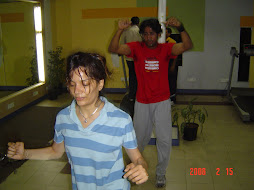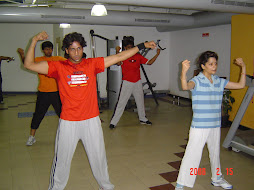A lovely trip recently to the historical city of Gwalior! The entire city is a visual and aesthetic feast, for the builders of Gwalior were great architects.Old havelis with exquisitely carved doorways and windows; statues of the Scindia family. Museums and art galleries are treasure houses and beautifully maintained palaces give the city its inimitable regal flavor. We started our journey with the beautiful Gwalior Fort, built on a steep mass of sandstone, dominates the city and is its most magnificent monument. It has been a scene of momentous events : imprisonments, battles and jauhars. A steep road winds upwards to the Fort, flanked by statues of Jain tirthankaras, carved into the rock face. The magnificent outer walls of the Fort still stand, two miles in length and 35 feet high, bearing witness to its reputation for being one of the most invincible forts of India. This imposing structure inspired Emperor Babar to describe it "the pearl amongst the fortresses of Hind." Within the fort are some marvels of medieval architecture.
Built by Raja Mansingh is the Man Mandir Palace, built between 1486 and 1517. The exquisite 'Man Mandir', Palace of Dreams, was built in his time and so began the most romantic epoch of the Gwalior Fort. Man Singh, a popular and just ruler, married a courageous Gujari village belle, Mrignayani.
The Rajputs constructed palaces and temples in the precincts of the fort of which the dedicated to Vishnu is the graceful little Sas-Bahu-ka-Mandir, built in 11th century is a fine example. Prolifically carved out of local sandstone, the temples are within the fort itself.
The Teli ka Mandir is a 9th century edifice, towering at 100 ft high. This is a Pratihara Vishnu temple of a unique blending of architectural styles. The shape of the roof is distinctively Dravidian, while the decorative embellishments have the typically Indo-Aryan characteristics of Northern India. The 2 nd photo shows a lovely view of the old city of Gwalior!
The 15th century Gujari Mahal is a monument to the love of Raja Mansingh Tomar for his Gujar queen, Mrignayani. After he had wooed and won her, so the story goes, Mrignayani demanded that he build her a separate palace with a constant water supply from the River Rai, via an aqueduct. The outer structure of the Gujari Mahal has survived in an almost total state of preservation; the interior has been converted into an Archaeological Museum.
A splendour of a different kind exists in the Jai Vilas Palace, current residence of the Scindia family. Some 35 rooms have been made into the Scindia Museum, and in these rooms, so evocative of a regal lifestyle, the past comes alive. Jai Vilas is an Italianate structure which combines the Tuscan and Corinthian architectural modes.
Helping ourselves to the Imli tree leaves at the Tansen's Makbara - legend has it that Tansen used to chew these leaves to keep his voice sweet! The father of Hindustani classical music, the great Tansen, one of the ‘nine Jewels’ of Akbar’s court, lies buried in Gwalior. We ended the trip with a leisurely swim in the royal pool of the Usha Kiran Palace hotel. Sightseeing in Gwalior is a magical trip into the centuries gone by.












No comments:
Post a Comment